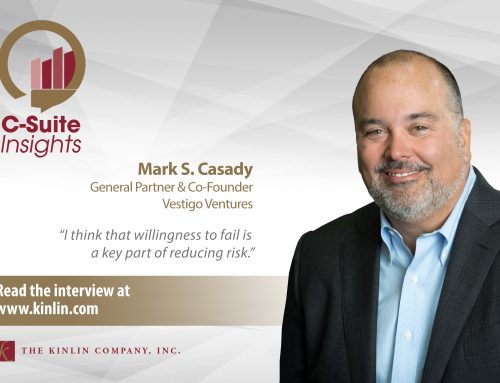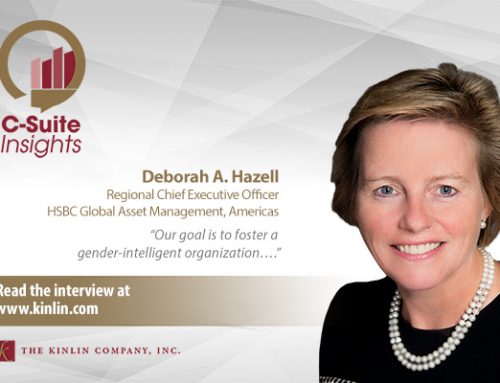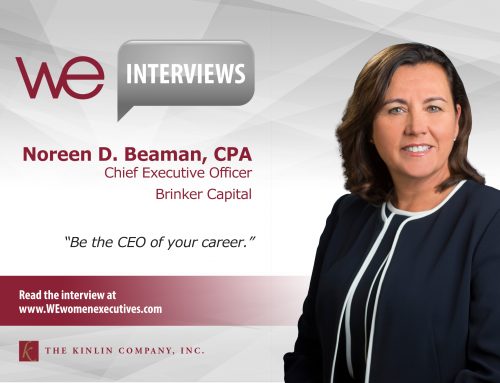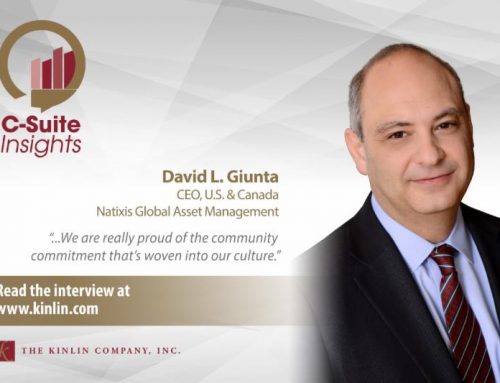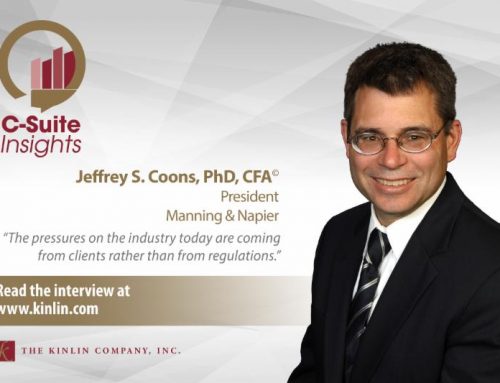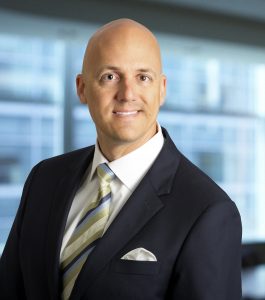 Jeffrey Kleintop, CFA
Jeffrey Kleintop, CFA
Senior Vice President
Chief Global Investment Strategist
Charles Schwab & Co., Inc.
As Senior Vice President and Chief Global Investment Strategist for Charles Schwab & Co., Inc., Jeffrey Kleintop’s interests are vast and wide-ranging, from geopolitics to earnings to central bank actions. His responsibilities include deciphering and interpreting events as they take place around the world and ascertaining what they mean for investors.
“Schwab created this role about three years ago because we noticed that money was increasingly flowing to international investments,” explains Kleintop. “Our customers were looking for insights on what developments around the world mean for markets here and abroad, so I stepped in to fill that role.”
I recently sat down with Kleintop to talk about trends he’s watching, opportunities he’s tracking, and the advice he would share with investors.
Maintain your perspective
In light of Kleintop’s focus on emerging trends, I was eager to get his read on the current state of affairs. What trends are you most worried about at the moment, and why, I inquired.
“I’ve been saying to audiences everywhere I go that the biggest political risk for investors in 2017 is putting too much emphasis on political risks. People are drawn to topics like politics, terrorism and geopolitics – all things that are very emotional. Investing is emotional, politics are emotional, and when you put them together, it’s emotional-squared. People can make emotional decisions, which are never good for their money, so I try to put that in perspective for them. This year – certainly the last 12 months – global stocks have tracked global earnings. If you looked at them on a chart, they’re pretty much in the same line, meaning that on any given day, politics or other developments can nudge the market one way or another. The trend is firmly rooted in improving fundamentals, so I keep driving investors back to that.
“I try to encourage investors not to worry about the risk implications of Trump, of some of the elections we’ve seen in Europe this year, of the risk of trade protectionism, of terrorist attacks…a lot of the things that people ask me questions about. Getting back to emotions, we as humans are just not innately built to be good investors, so I try to empower people to focus on the things that really matter so that they can make better investment decisions. Oftentimes that means doing the opposite of what’s going viral in social media. What’s exciting to focus on is often the worst thing to focus on because, at least this year, we haven’t seen politics, geopolitics, terrorism or Trump really affect the market trajectory. I think that’s an important lesson for investors to keep in mind.”
So, what are you most optimistic about?
“While it’s hard to predict markets, it’s easy to predict behavior. Investors tend to follow certain trends — they tend to buy when the five-year return in the stock market is moving up and sell when it’s going down, and as of late last year, the market has turned a corner. Things improved once we dropped off that debt ceiling battle back in 2011, when the U.S. got downgraded in terms of its debt rating.
“Once that was out of sight and out of mind, the five-year return of the stock market began to hook back up again, and for the first time in two or three years, individual investors started to buy stocks again. These tend to be durable trends. They don’t tend to last a month or two, they tend to last a year or two, and contrary to popular perception that the stock market is at a peak, we haven’t yet seen individual investors embrace stocks – they’ve been very slow to buy back in. But they’ve started to do so in the last eight or nine months. Again, these are usually durable trends and if that’s true, they could be a powerful force helping to lift the stock market.
“Remember, it’s just been corporate buybacks lifting stocks in recent years – they’ve been the only class of buyers. They’re still there, but now we’ve got the 800-pound gorilla of the individual investor coming back to the markets in a durable way, and that could help to support markets, keep the focus on fundamentals, and keep earnings moving higher over the next 12 months or so.”
Think long term
In 2006, you published Market Evolution: How to Profit in Today’s Changing Financial Markets. A lot has changed in the intervening 11 years. Does the guidance you offered then still stand?
“I think what’s most important today is what I got wrong, yet still got right. I would never advise anyone to do as I did and put a return forecast in a book. It’s a dumb idea; anything can happen. Nevertheless, I included a 10-year forecast for large cap stocks, mid cap stocks, small cap stocks, and the bond market to try and help people understand what to expect going forward and how they might want to set up their portfolio.
“The book was written in 2005 and published in 2006, and nowhere was there a chapter on the financial catastrophe just a couple of years away. Although I did talk about a potential recession in the next few years, I certainly didn’t foresee the depth of the coming financial crisis. But the amazing thing is, my 10-year return forecasts were right to within a percentage point. Here’s the counterintuitive thing about investing that I think is important about that book: it’s hard to predict the short term. No one really does it well; I’ve never seen anybody who’s able to predict the short term consistently. Likewise, it’s very hard to predict what individual stocks will do, but predicting the long term for an overall market is actually not that hard. Valuation matters a lot over the long term, even though it doesn’t matter at all, really, in the short term. There’s no correlation between the stock market’s valuation and its return a year later, but 10 years later, it’s a very, very, strong predictive relationship.
“I think the typical investor would think it’s easier to predict the behavior of one thing, like a stock, in the short term, than it is to predict the behavior of a larger entity, like the market, over the long term. But it’s the exact opposite. I think that’s what may be relevant for individuals to think about today.”
Look to Asia
In a recent interview with Investment News, you predicted that the biggest influence on the global economy over the next 15 years will be the burgeoning middle class in Asia. Can you say a bit more about that?
“I think this is a megatrend, and it’s fascinating. The World Bank forecasts that by the year 2030, India and China will account for 40 percent of the world’s middle class spending and the U.S. will account for only 7 percent. They made this forecast back in 2009, but remarkably, we are on track towards these numbers. Demographics are destiny in a way, and it’s fascinating to see. As a matter of fact, by the year 2020, China’s middle-class spending is predicted to exceed that of the U.S. I think we’re very close to that happening right now – we’re a little bit ahead of schedule.
“The number of billionaires in China is amazing – I met a few when I was there in April. There’s incredible opportunity and the growth that’s taking place is amazing. We’ve gotten used to products being designed, marketed, and focused on investors in Europe and the US, but that’s changing at a pace we’ve never seen before, and the focus is rapidly becoming Asia, because that’s where the new customer is. We’re seeing brick and mortar stores closing in the U.S., but Starbucks—just to pick one of many companies—is opening them rapidly in China. Health care is another example. We’re seeing higher rates of cholesterol and heart disease and all kinds of problems as people in Asia adopt more Western style diets and lifestyles. And of course, they will have financial services needs as their wealth grows, so it will be fascinating to see how rapidly that trend grows as well.
“I think a lot of investors are focused on where the growth is going to come from because they see sluggish economic growth, they’re worried about the political environment, and they’re just not seeing the income growth that they saw in the ‘80s or ‘90s, or even early 2000s in the developed world. Don’t worry about it – emerging markets are where the incredible growth and demand is likely to come from. That’s where 80 percent of the world’s population lives and incomes are growing at 12, 13, 14 percent a year. So, I’m really excited about that megatrend helping to support global growth and sales for multinational companies in the years ahead.”
Consider the ‘why’
The nature of the asset management industry appears to be changing – do you think this is a good turn of events for investors?
“I think it’s all great for the investor. 20 years ago, I remember going on CNBC and the question was, ‘What are your three favorite stocks and why?’ And we talked about the Dow, and now it’s about the 30,000-foot view of the global markets. I think it’s a healthy thing. Many years ago, people were looking for expertise on how to invest, then in the 90s, they were looking for advice on what to invest in, and now they’re asking why invest, in other words, ‘What’s the philosophy of my portfolio?’ I think they’re more likely to stick with investments that they understand and that are intended to get them to their goals, rather than with this week’s three hot stocks.
“I think the focus on cost is also a very good thing. The cost of investing has come down tremendously, and I think that’s important. If average returns are going to be 6 or 7 percent for the stock market, rather than 10 or 11 percent, then those costs matter a lot. I think it’s important that people focus on that element – which hasn’t always been as transparent in this industry as it is today. I think technology has helped. Now people are asking, ‘What am I paying for?’ and ‘What am I getting?’
“I love honest questions, so I love speaking in front of audiences. I love hearing what people are excited about, what they’re concerned about, and what they want to know more about. I think it’s great when someone asks a genuine question such as, ‘Why not sell everything and sit it out for a year? What’s the risk?’ I know where they’re coming from, I understand the anxiety, and it allows me to acknowledge what’s really behind the question. Then I can help them really understand and perhaps forge a new connection to their portfolio.”
Is there anything else that you think it’s important for readers to know?
“I think people are under-invested and under-diversified. Wherever I go, I find that people think the best place to invest is wherever they are. When we look at what percentage of people’s stock market portfolios are invested in stocks headquartered in their own country, it’s just amazing. In the U.S., it’s about 75 percent. That is true in a large number of countries. It’s very similar in Hong Kong. When I was there recently, I surveyed the room and found that 82 percent of the portfolios in the room were in Hong Kong stocks. I see it everywhere I go. How could it be that everyone thinks that where they live is the best place in the world to invest? I think it’s due in part to anxiety and in part to lack of knowledge. People think, ‘I’m not sure what’s going on over there, but I understand what’s happening here, even if I don’t like it.
“If you look at the US stock market, it behaves a lot like a tech ETF – it moves in lock step with the tech sector. Japan behaves a lot like the financial sector. Germany behaves like the auto sector, Australia, like materials, and Canada, like energy. I mean, the only thing you need to know about Canada is your outlook for oil prices. Nothing else has mattered for Canada for 15 years…not elections or monetary policy or anything else. It’s all about the oil price. It explains each movement, every wiggle in the Canadian stock market. Stock market sectors have been moving independently of each other lately. For example, energy stocks have had a wild ride in recent years, while tech stocks have steadily climbed. Financial stocks have been volatile and tied to the movements in the yield curve. This has meant that the bulls aren’t running in a herd. Bull markets can be found in the stocks of countries around the world, but their movements are the least correlated with each other that they have been at any time in the past 20 years—thanks to these sector divergences. The return of lower correlations across the world’s stock markets has the potential to offer globally diversified investors the benefit of less volatility without hampering returns on the path to financial goals—in essence decreasing risk without decreasing return. Right now, global diversification is worth more than it has been in a long time.”
![]()

